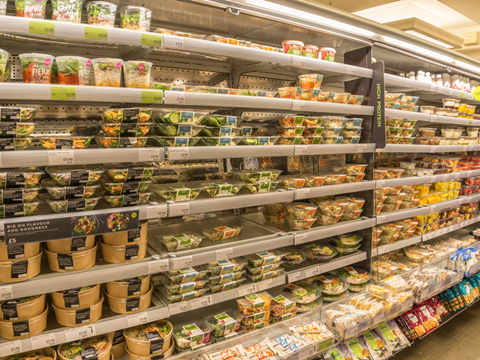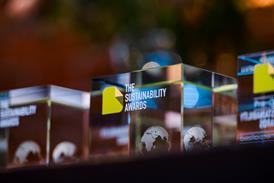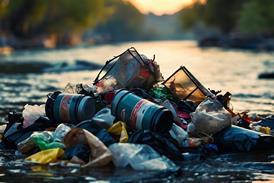
DS Smith’s Material Change Index details the use of plastic in food and drink packaging sold at supermarkets across six European countries, revealing the UK as the most reliant on ‘unnecessary’ plastics and 25% of companies falling short of their plastic reduction targets.
The Material Change Index was commissioned by DS Smith and conducted by Retail Economics. As part of the study, researchers audited the plastic used to package 1,500 food and drink products across the top five British, French, German, Italian, Spanish, and Polish food retailers by market share.
From this, they undertook ‘basket analysis’, in which fifty items representing a typical household’s regular food and drink purchases across each item were examined for their plastic packaging components. These baskets were weighted based on the item’s importance in an overall food shop, consumer spending patterns, retailer market share, and each country’s harmonized CPI weightings.
‘Store inventory analysis’ was also performed to determine the range of plastic food and drink packaging across different areas in a store. This was weighted by retailer market share and store size to accommodate the range of products and packaging types available.
Together, these analyses formed a weighted average of plastic usage across a representative shopping basket and product range, collectively called an ‘overall packaging index’.
According to the results, 70% of all the food and drink packaging sold in British stores features plastic components – making it the country most reliant on plastic packaging. Spain is the second most significant consumer of plastics with 62% of its packaging containing plastics; Italy and Germany are joint in third at 66%, followed by Poland at 62% and France at 59%.
The Index goes on to present its ‘unnecessary plastic analysis’. In this context, ‘unnecessary’ describes plastic packaging that can be entirely removed from a product; this includes minimal plastic coatings, plastic seals, and packaging with a plastic content of less than 1% by weight. It also encompasses plastics that can be reduced to less than 5% by weight by transitioning into alternative materials – all while remaining recyclable within standard recycling processes.
By this definition, 51% of food and drink products sold in UK supermarkets are packaged in unnecessary plastic. Retail Economics calculates a total of 29.8 billion ‘avoidable’ pieces of plastic sold across the country every year.
Most of this plastic is applied to processed foods. Ready meals and meal kits are said to constitute 90% of ‘unnecessary’ plastics, while 89% are attributed to bread, rice, and cereals. Dairy packaging makes up 83%, and meat and fish 80%.
“Good progress has been made but there is more to do,” says DS Smith’s group chief executive, Miles Roberts. “Government can and should demand more of us all – phasing out certain plastics to create a level playing field that encourages innovation, investment, and generates healthy competition to replace plastic.
“Over the last four years, we’ve replaced over 1 billion pieces of plastic, but meeting consumer demand for sustainable packaging is crucial. We hope the Government’s Zero Waste Strategy will support the use of more readily recyclable materials.”
Additionally, Retail Economics led a B2B survey among 300 food and drink industry professionals in senior packaging or sustainability positions across the six countries. 98% of respondents were found to have committed to reducing plastic packaging, with 60% – three in five – having two years or less remaining to reach their voluntary targets.
However, 25% are reportedly off track to achieving their goals. Two in five (40%) attribute this to the cost of raw material, while 39% are concerned that consumers would not accept changes in their packaging.
Competitiveness is the predominant concern. 72% of respondents think shoppers would not want to pay extra for a sustainability-minded packaging design, and 65% doubt consumers would choose sustainability over convenience.
Previous research has also looked into the factors stalling the transition into more sustainable packaging. In a survey with packaging designers, UPM and the Pentawards underscored the challenges associated with cost; and while 35% of respondents felt that material guides would be the most beneficial resource to help them design a pack for sustainability, 37% reported that they rarely or never have any influence over the materials chosen.
Meanwhile, Aura discovered that 79% of senior packaging professionals have limited knowledge of, or need help with, current and future packaging regulations – reinforcing the findings of another survey suggesting that sustainability legislation is considered the biggest challenge to the packaging industry. On the other hand, while 61% of respondents believed their supply chains to be unsustainable or identified room for improvement, this marked a 22% decrease from previously recorded data.
If you liked this story, you might also enjoy:
The ultimate guide to the Packaging and Packaging Waste Regulation in 2024
How are the top brands progressing on packaging sustainability?
Sustainable Innovation Report 2024: Current trends and future priorities
Everything you need to know about global plastic sustainability regulation

















No comments yet